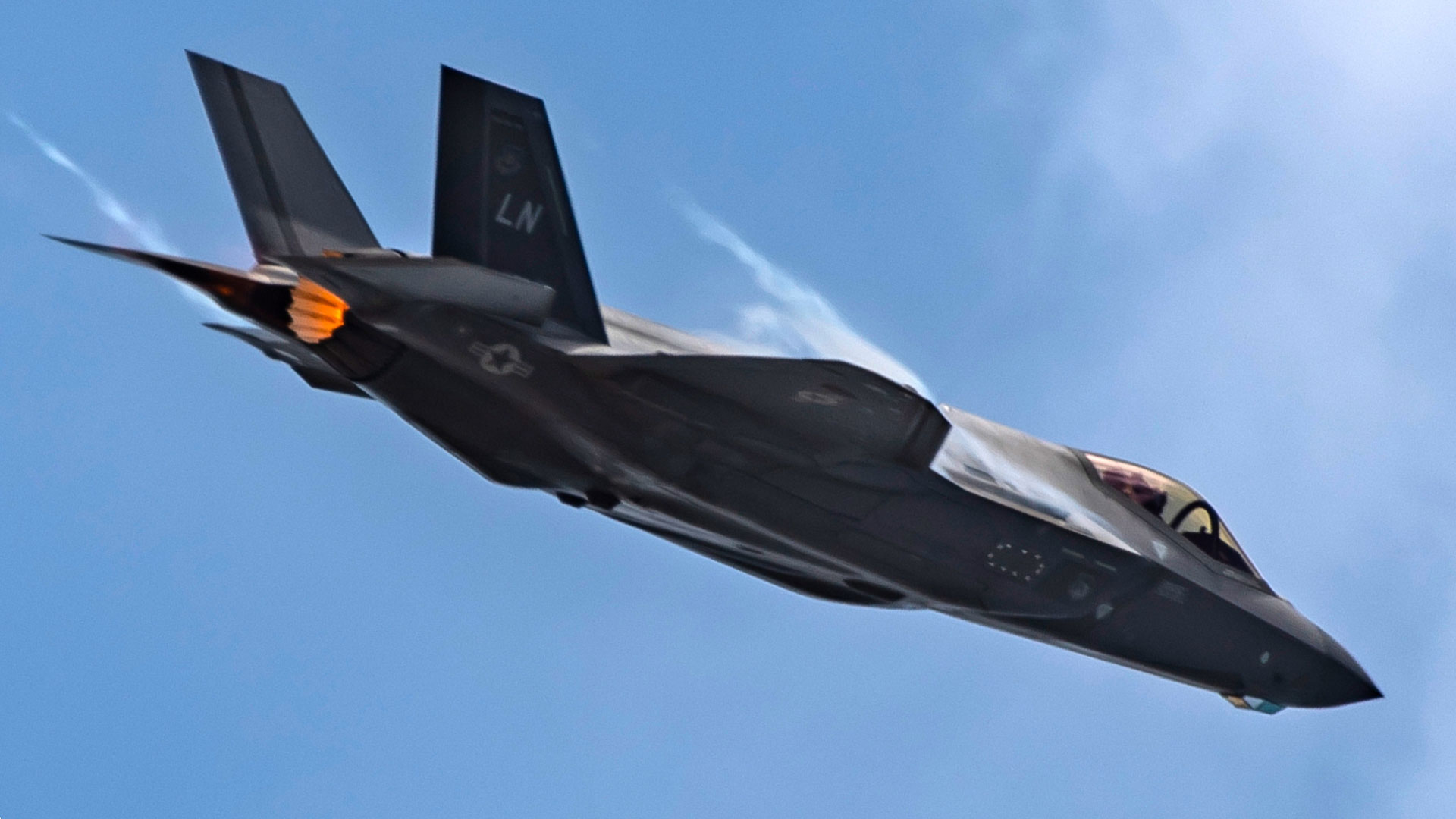Pilot’s 50-minute in-flight conference call with tech support failed to avert $200 million F-35 fireball — pilot ejected and suffered only minor injuries

An accident report has revealed that a U.S. Air Force pilot spent 50 minutes on a conference call with Lockheed Martin engineers ahead of his plane plummeting to the ground and exploding in a fireball. Thankfully, the unnamed pilot ejected safely with just minor injuries, reports CNN, but the $200 million F-35 fighter jet was destroyed.
This incident took place on January 28, near Eielson Air Force Base, Fairbanks, Alaska. Investigations point towards the presence of water in hydraulic lines as the root cause of this military jet crash. But the investigator’s report also suggests the pilot and engineering team’s handling of the landing gear issue could have been better.

Incident timeline: problems became apparent with landing gear
Shortly after take-off, the pilot ran into an issue with the F-35. The landing gear wouldn’t retract correctly, so he sought to lower it again, but it then became locked at an angle, neither retracted nor correctly lowered… Running through operational check lists didn’t remedy the situation.
Sensing the need for assistance, the pilot then decided to consult the experts. He managed to get a group of five Lockheed Martin engineers (the F-35’s makers) to participate in a conference call. According to CNN’s viewing of the incident report, five engineers were on the call: “a senior software engineer, a flight safety engineer, and three specialists in landing gear systems.”
We can’t be sure of the advice given, but next in the chain of dramatic events was the pilot attempting two ‘touch and go’ landings. During these procedures, the idea was to try and straighten out the landing gear. However, the nose wheel still couldn’t be straightened.
Things actually got worse after the two dummy landing attempts. CNN notes that the left and right main landing gears also froze along with the nose wheel.
Now, flying the plane with multiple system errors was bad enough, but the plane then became “uncontrollable” as it started to operate in “automated ground-operation mode.”
Get Tom's Hardware's best news and in-depth reviews, straight to your inbox.
Without proper flying mode power or controls, the pilot thus made the decision to eject. The pilot suffered a few minor injuries, but the $200m plane ended up in a fireball.
Post-crash analysis
On inspection of the wreckage, the hydraulic system appears to have mistakenly been partly filled with water (a third of the fluid present). There should have been no water in these lines due to the extremely low temperatures aircraft endure at altitudes. CNN notes that on the day of the flight, the ground temperature was an already chilly -1 degree Fahrenheit (about -17 degrees Celsius).
Another F-35 at the same base was flown 9-days later, and suffered a similar hydraulic icing issue – but it was able to land safely.
Focusing back on the headlining fireball incident, and the Air Force’s Accident Investigation Board concluded a mix of “crew decision making” and hydraulic fluid maintenance programs contributed to the crash.
This might seem harsh on the pilot and engineers. However, the engineers reportedly talked about a 2024 maintenance update during the conference call. If they had followed this updated guidance, then “they likely would have advised a planned full stop landing or a controlled ejection instead of a second touch-and-go,” says the report.
Follow Tom's Hardware on Google News to get our up-to-date news, analysis, and reviews in your feeds. Make sure to click the Follow button.

Mark Tyson is a news editor at Tom's Hardware. He enjoys covering the full breadth of PC tech; from business and semiconductor design to products approaching the edge of reason.
-
bit_user Too bad it wasn't a F-35B, with the STOVL system.Reply
F-35B Joint Strike Fighter (thrust vectoring nozzle and lift fan)
F-35B Lightning II lands aboard HMS Queen Elizabeth (R08) on 17 October 2019 (191017-N-QI061-1159)Glad everyone walked away from it, though. -
KyaraM Oof. That is something nobody wants, or should have to, experience. Glad there were no heavy injuries. It does sound like the maintenance crew kriffed up there, though. Considering another plane had the same issue, I would check all planes, the hydraulic fluid used (might have been an issue there after all), and give the maintenance crew a refresher. That stuff is dangerous.Reply -
USAFRet Water in the hyd system sounds like 100% maintenance fault.Reply
"On inspection of the wreckage, the hydraulic system appears to have mistakenly been partly filled with water (a third of the fluid present)." -
gg83 Reply
Almost sounds like sabotage to me.USAFRet said:Water in the hyd system sounds like 100% maintenance fault.
"On inspection of the wreckage, the hydraulic system appears to have mistakenly been partly filled with water (a third of the fluid present)." -
USAFRet Reply
Not to me.gg83 said:Almost sounds like sabotage to me.
Maintenance does screw up sometimes. Not often, but it happens. -
COLGeek Reply
Agreed. This was human error. Some failure in the maintenance procedure led to this. These aircraft have been flown successfully in these environments for years.USAFRet said:Not to me.
Maintenance does screw up sometimes. Not often, but it happens. -
EzzyB Reply
Yeah, when you're in Alaska, and 30% of you hydraulic fluid is water.... ooof!COLGeek said:Agreed. This was human error. Some failure in the maintenance procedure led to this. These aircraft have been flown successfully in these environments for years. -
Dragonwatcher It comes down to three people. First the Hydraulics specialist who checked and filled the reservoirs, His name and man number will be in the Aircraft Forms along with the person who signed off the Red X that would have grounded the aircraft. Second the Crew Chief for those aircraft, it is their job to check those systems prior to flight, post flight, and on a predetermined schedule. Especially if there was a grounding issue such as opening the reservoir to service it. Lastly the pilot should have checked after reviewing the aircraft forms prior to flight and seeing that there reservoir(s) were opened and serviced.Reply
I was Flightline maintenance on B52's for several years. The Air Force runs on paperwork just as much as it does on JP4. -
USAFRet Reply
As was I, on fighters, for most of 2 decades.Dragonwatcher said:I was Flightline maintenance on B52's for several years.